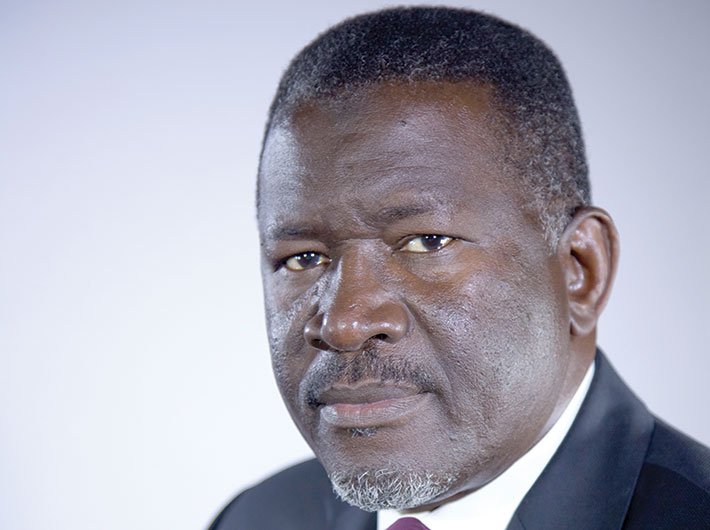Elhadj As Sy is the secretary general of the International Federation of Red Cross and Red Crescent Societies (IFRC) since August 2014. IFRC is the world’s largest humanitarian network, comprising 189 member National Red Cross and Red Crescent Societies, a secretariat in Geneva and five zone offices. A Senegalese national, Sy has more than 25 years of experience of humanitarian work in the UN, the Global Fund to Fight AIDS, Tuberculosis and Malaria, and other agencies. On August 19, the UN observed the World Humanitarian Day to celebrate the spirit that drives humanitarian work across the globe. Sy speaks to Shreerupa Mitra-Jha on the increasing threats to the lives of humanitarian workers and the difficulty of maintaining the professed principle of neutrality in the face of intense conflicts, among other issues.
In 2014 alone, 329 humanitarian workers were killed in their line of duty. Do you think they are increasingly coming under threat not only from terrorist groups like the ISIS or ISIL but also from government-sponsored raids and bombings that disregard international humanitarian law?
In recent years, we have seen growing disregard for the safety of aid workers. This is totally unacceptable. Humanitarian aid workers, including the volunteers and staff of the International Red Cross and Red Crescent Movement, are neutral and impartial. Their focus is solely on meeting the needs of people affected by disasters and other crises.
The situation is particularly challenging for local aid workers and volunteers. For example, since the beginning of the Syria crisis, more than 40 volunteers from the Syrian Arab Red Crescent have been killed.
We should remember that, when aid workers and volunteers are targeted, the people who rely on their support also suffer because their access to food, shelter or medical assistance is interrupted or cut.
We often do not know who the culprits are. But it does not matter – the bottom line is that humanitarian space should be protected. No one should lose their life when trying to save lives.
There were reports in August that the Rohingyas were not allowed to move out of flood-inundated areas in Myanmar to safer places. How does IFRC negotiate such situations? How difficult is it to maintain neutrality in not only conflict zones but also in non-conflict zones having divisive internal politics?
We remain neutral to political discussions. The principle of neutrality has been tested over time, and has proven to be effective in all settings. We will continue to pursue it despite the difficulties we face on the ground.
While there seems to be sufficient funding for bombing campaigns, funding for humanitarian work has reached an acute shortfall. How severe is the funding gap?
Globally, we are seeing the level of humanitarian needs rise at an alarming rate. According to the UN, the number of people in need of humanitarian assistance has nearly doubled in the past six years – from 43 million in 2009 to 83 million today. At the same time, we are seeing more and more protracted crises, situations where people are relying on humanitarian assistance for two, three, even five years. While annual humanitarian funding has increased, it has failed to match this escalation in need.
The result of this is that humanitarian organisations are being asked to do more with less, and millions of people are left with little or no support. We need more resources – urgently – to reach the most vulnerable and hardest to reach across a continuum of preparedness-response-recovery.
How will the Sustainable Development Goals to be adopted by the UNGA in September impact humanitarian work and response?
We hope that the SDGs will create even more momentum for this resilience-based approach. Resilience is featured prominently in the SDGs and the 2030 Development Agenda. This is welcome. We must commit to turning this momentum into reality and to collectively deliver on the promises we have made.
Doing so will require more resources and authority to be delivered to local organisations, including National Red Cross and Red Crescent Societies. They speak the same language and share the same cultural norms. They are often best placed to support communities to identify and address their risks and vulnerabilities. This local, permanent presence is at the heart of the Red Cross and Red Crescent’s strength.
What are your expectations from the Paris climate change conference to be held later this year in light of the growing number of natural disasters hitting the world today?
Climate change is one of the major drivers of disaster risk. These risks are rising; this is a reality that we are seeing every day. We are seeing it in the increase in the frequency and intensity of disasters, including small and medium-scale disasters. We are seeing it in changing weather patterns, which can have a potentially catastrophic impact on people living in flood prone, low-lying or arid areas.
We hope to see commitments to reduce greenhouse gas emissions, and to supporting communities to become more resilient to the consequences of climate change. Tackling climate change effectively will require long-term commitments.
Paris is the beginning of a long journey that will be paved by action on the ground and at the community-level. The IFRC is ready to do its part. In March, we announced ‘One Billion Coalition for Resilience’ – a new partnership that brings together humanitarian organisations, civil society groups and other stakeholders around the same goal to lift, by 2025, one billion people out of situations of risk and vulnerability and to become more resilient in the face of shocks and hazards.
shreerupa@governancenow.com

